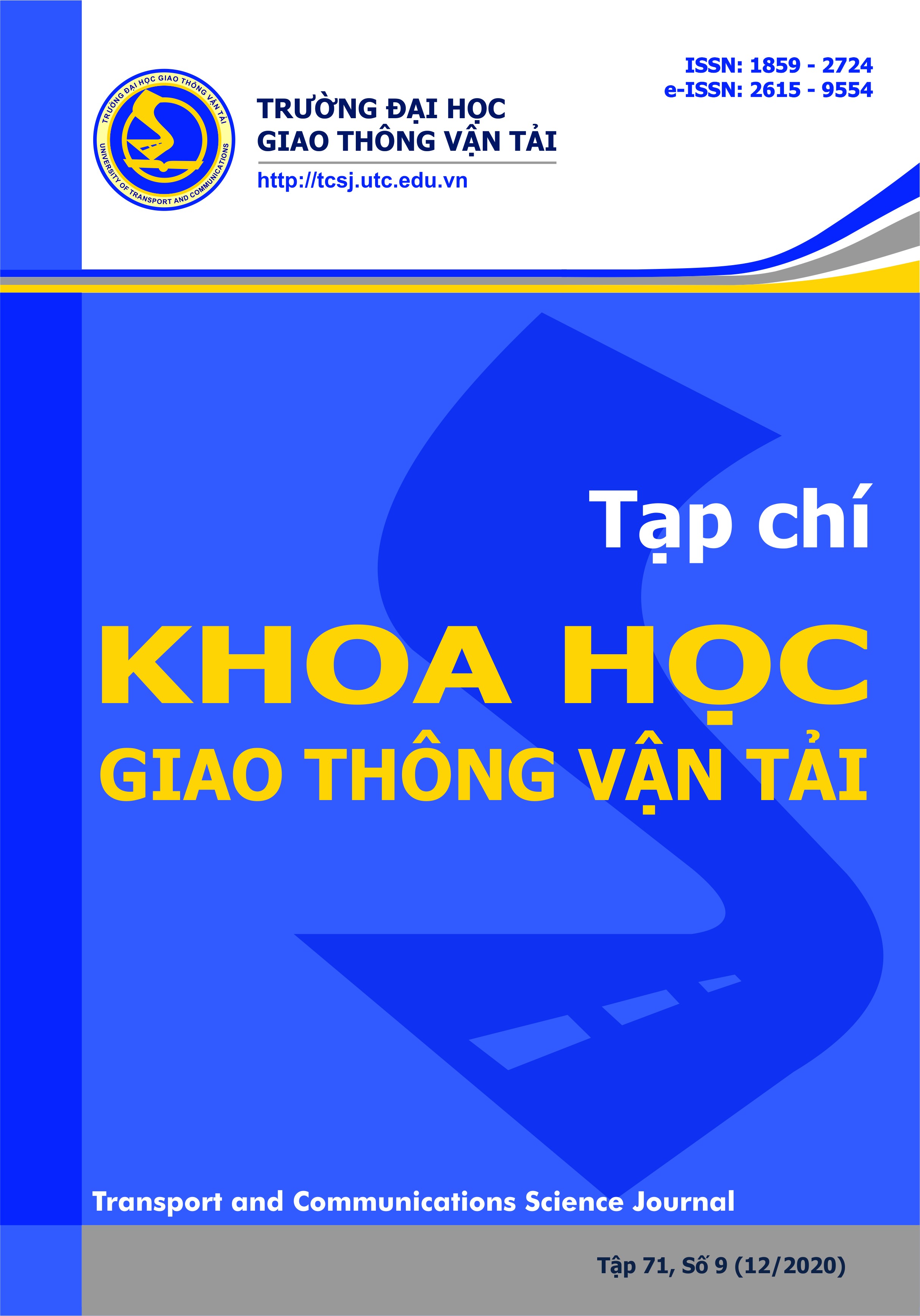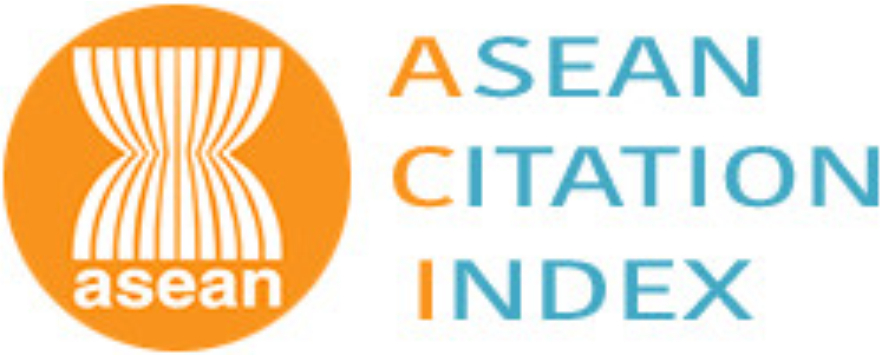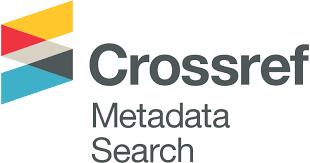Nghiên cứu ảnh hưởng của vết nứt tới độ thấm của vật liệu rỗng bằng phương pháp phần tử hữu hạn
Email:
banglh@utt.edu.vn
Từ khóa:
Giải phương trình Stokes - Darcy, môi trường rỗng có vết nứt, độ thấm, phương pháp phần tử hữa hạn.
Tóm tắt
Trong xây dựng công trình, địa kỹ thuật, dòng chảy trong môi trường rỗng có vết nứt thường được các nhà khoa học rất quan tâm. Tuy nhiên cho tới thời điểm hiện tại, vẫn tồn tại nhiều hạn chế về cơ sở lý thuyết và thực tiễn cần được nghiên cứu. Một trong những cách tiếp cận vấn đề chất lỏng chảy qua môi trường rỗng có vết nứt chính là việc giải bài toán kết hợp giữa phương trình Stokes và Darcy. Trong nghiên cứu này, nhóm tác giả sử dụng công cụ phần tử hữu hạn đã được phát triển trong Matlab để tính toán độ thấm của môi trường rỗng có vết nứt thông qua việc giải bài toán Stokes-Darcy. Ứng xử cơ học của môi trường rỗng có vết nứt thường được quyết định bởi yếu tố dòng chảy qua nó, độ rỗng ban đầu, sự phân bố và liên kết của mạng lưới lỗ rỗng, khe nứt. Vì vậy, bài báo tập trung nghiên cứu vai trò các yếu tố ảnh hưởng đến đặc tính của dòng chảy trong môi trường rỗng như hình dạng hay sự liên kết các vết nứt. Kết quả cho thấy những yếu tố trên đặc biệt quan trọng tới độ thấm vĩ mô của môi trường rỗng có vết nứt. Khi vết nứt là liên tục thì độ thấm của nó có giá trị lớn hơn ít nhất 1000 lần độ thấm của môi trường rỗng xung quanh. Ngược lại, nếu vết nứt bị cô lập bởi môi trường rỗng thì tùy vào dạng hình học của vết nứt mà độ thấm của nó sẽ có những ảnh hưởng nhất định tới độ thấm vĩ mô (có giá trị nhỏ hơn từ 4 đến 15 lần độ thấm của môi trường rỗng bao quanh).Tài liệu tham khảo
[1] D.T. Hai, Current status of existing railway bridges in Vietnam: An overview of steel deficiencies, Journal of Constructional Steel Research, 62 (2006) 987-994. https://doi.org/10.1016/j.jcsr.2006.01.009
[2] V. Zivica, A. Bajza, Acidic attack of cement-based materials—a review Part 2. Factors of rate of acidic attack and protective measures, Construction and Building Materials, 16 (2002) 215-222. https://doi.org/10.1016/S0950-0618(02)00011-9
[3] P. Dietrich, R. Helmig, M. Sauter, H. Hötzl, J. Köngeter, G. Teutsch, Flow and transport in fractured porous media, Springer Science & Business Media, 2005. https://doi.org/10.1007/b138453
[4] M. Sahimi, Flow and transport in porous media and fractured rock: from classical methods to modern approaches, John Wiley & Sons, 2011. https://doi.org/10.1002/9783527636693
[5] J.-L. Auriault, E. Sanchez-Palencia, Etude du comportement macroscopique d’un milieu poreux saturé déformable, Journal de Mécanique, 16 (1977) 575-603. https://www.researchgate.net/publication/279688679_A_Study_of_the_Macroscopic_Behavior_of_a_Deformable_Saturated_Porous_MediumETUDE_DU_COMPORTEMENT_MACROSCOPIQUE_D'UN_MILIEU_POREUX_SATURE_DEFORMABLE
[6] S. Whitaker, Diffusion and dispersion in porous media, AIChE Journal, 13 (1967) 420-427. https://doi.org/10.1002/aic.690130308
[7] C.Y. Wang, Stokes slip flow through square and triangular arrays of circular cylinders, Fluid Dynamics Research, 32 (2003) 233-246. https://doi.org/10.1016/S0169-5983(03)00049-2
[8] F.J. Alcocer, P. Singh, Permeability of periodic arrays of cylinders for viscoelastic flows, Physics of Fluids, 14 (2002) 2578. https://doi.org/10.1063/1.1483301
[9] M. Bai, D. Elsworth, J.-C. Roegiers, Modeling of naturally fractured reservoirs using deformation dependent flow mechanism, International Journal of Rock Mechanics and Mining Sciences & Geomechanics Abstracts, 30 (1993) 1185-1191. https://doi.org/10.1016/0148-9062(93)90092-R
[10] J.L. Auriault, C. Boutin, Deformable porous media with double porosity. Quasi-statics. I: Coupling effects, Transport in Porous Media, 7 (1992) 63-82. https://doi.org/10.1007/BF00617317
[11] J.L. Auriault, C. Boutin, Deformable porous media with double porosity. Quasi-statics. II: Memory effects, Transport in Porous Media, 10 (1993) 153-169. https://doi.org/10.1007/BF00617006
[12] J.L. Auriault, C. Boutin, Deformable porous media with double porosity III: Acoustics, Transport in Porous Media, 14 (1994) 143-162. https://doi.org/10.1007/BF00615198
[13] P. Royer, J.-L. Auriault, C. Boutin, Macroscopic modeling of double-porosity reservoirs, Journal of Petroleum Science and Engineering, 16 (1996) 187-202. https://doi.org/10.1016/S0920-4105(96)00040-X
[14] C. Boutin, P. Royer, J.-L. Auriault, Acoustic absorption of porous surfacing with dual porosity, International Journal of Solids and Structures, 35 (1998) 4709-4737. https://doi.org/10.1016/S0020-7683(98)00091-2
[15] X. Olny, C. Boutin, Acoustic wave propagation in double porosity media, The Journal of the Acoustical Society of America, 114 (2003) 73-89. https://doi.org/10.1121/1.1534607
[16] H.C. Brinkman, A calculation of the viscous force exerted by a flowing fluid on a dense swarm of particles, Flow, Turbulence and Combustion, 1 (1949) 27. https://doi.org/10.1007/BF02120313
[17] G.S. Beavers, D.D. Joseph, Boundary conditions at a naturally permeable wall, Journal of Fluid Mechanics, 30 (1967) 197-207. https://doi.org/10.1017/S0022112067001375
[18] P.G. Saffman, On the boundary condition at the surface of a porous medium, Studies in Applied Mathematics, 50 (1971) 93-101. https://doi.org/10.1002/sapm197150293
[19] A. Mikelic, W. Jäger, On the interface boundary condition of Beavers, Joseph, and Saffman, SIAM Journal on Applied Mathematics, 60 (2000) 1111-1127. https://doi.org/10.1137/S003613999833678X
[20] M. Discacciati, A. Quarteroni, A. Valli, Robin–Robin domain decomposition methods for the Stokes–Darcy coupling, SIAM Journal on Numerical Analysis, 45 (2007) 1246-1268. https://doi.org/10.1137/06065091X
[21] W.J. Layton, F. Schieweck, I. Yotov, Coupling fluid flow with porous media flow, SIAM Journal on Numerical Analysis, 40 (2002) 2195-2218. https://doi.org/10.1137/S0036142901392766
[22] T. Arbogast, D.S. Brunson, A computational method for approximating a Darcy–Stokes system governing a vuggy porous medium, Computational Geosciences, 11 (2007) 207-218. https://doi.org/10.1007/s10596-007-9043-0
[23] M. Fortin, Old and new finite elements for incompressible flows, International Journal for Numerical Methods in Fluids, 1 (1981) 347-364. https://doi.org/10.1002/fld.1650010406
[24] T. Arbogast, M.F. Wheeler, A family of rectangular mixed elements with a continuous flux for second order elliptic problems, SIAM Journal on Numerical Analysis, 42 (2005) 1914-1931. https://doi.org/10.1137/S0036142903435247
[25] K.A. Mardal, X.-C. Tai, R. Winther, A robust finite element method for Darcy–Stokes flow, SIAM Journal on Numerical Analysis, 40 (2002) 1605-1631. https://doi.org/10.1137/S0036142901383910
[26] H.-B. Ly, H.-L. Nguyen, M.-N. Do, Finite element modeling of fluid flow in fractured porous media using unified approach, Vietnam Journal of Earth Sciences, 43 (2020). https://doi.org/10.15625/0866-7187/15572
[2] V. Zivica, A. Bajza, Acidic attack of cement-based materials—a review Part 2. Factors of rate of acidic attack and protective measures, Construction and Building Materials, 16 (2002) 215-222. https://doi.org/10.1016/S0950-0618(02)00011-9
[3] P. Dietrich, R. Helmig, M. Sauter, H. Hötzl, J. Köngeter, G. Teutsch, Flow and transport in fractured porous media, Springer Science & Business Media, 2005. https://doi.org/10.1007/b138453
[4] M. Sahimi, Flow and transport in porous media and fractured rock: from classical methods to modern approaches, John Wiley & Sons, 2011. https://doi.org/10.1002/9783527636693
[5] J.-L. Auriault, E. Sanchez-Palencia, Etude du comportement macroscopique d’un milieu poreux saturé déformable, Journal de Mécanique, 16 (1977) 575-603. https://www.researchgate.net/publication/279688679_A_Study_of_the_Macroscopic_Behavior_of_a_Deformable_Saturated_Porous_MediumETUDE_DU_COMPORTEMENT_MACROSCOPIQUE_D'UN_MILIEU_POREUX_SATURE_DEFORMABLE
[6] S. Whitaker, Diffusion and dispersion in porous media, AIChE Journal, 13 (1967) 420-427. https://doi.org/10.1002/aic.690130308
[7] C.Y. Wang, Stokes slip flow through square and triangular arrays of circular cylinders, Fluid Dynamics Research, 32 (2003) 233-246. https://doi.org/10.1016/S0169-5983(03)00049-2
[8] F.J. Alcocer, P. Singh, Permeability of periodic arrays of cylinders for viscoelastic flows, Physics of Fluids, 14 (2002) 2578. https://doi.org/10.1063/1.1483301
[9] M. Bai, D. Elsworth, J.-C. Roegiers, Modeling of naturally fractured reservoirs using deformation dependent flow mechanism, International Journal of Rock Mechanics and Mining Sciences & Geomechanics Abstracts, 30 (1993) 1185-1191. https://doi.org/10.1016/0148-9062(93)90092-R
[10] J.L. Auriault, C. Boutin, Deformable porous media with double porosity. Quasi-statics. I: Coupling effects, Transport in Porous Media, 7 (1992) 63-82. https://doi.org/10.1007/BF00617317
[11] J.L. Auriault, C. Boutin, Deformable porous media with double porosity. Quasi-statics. II: Memory effects, Transport in Porous Media, 10 (1993) 153-169. https://doi.org/10.1007/BF00617006
[12] J.L. Auriault, C. Boutin, Deformable porous media with double porosity III: Acoustics, Transport in Porous Media, 14 (1994) 143-162. https://doi.org/10.1007/BF00615198
[13] P. Royer, J.-L. Auriault, C. Boutin, Macroscopic modeling of double-porosity reservoirs, Journal of Petroleum Science and Engineering, 16 (1996) 187-202. https://doi.org/10.1016/S0920-4105(96)00040-X
[14] C. Boutin, P. Royer, J.-L. Auriault, Acoustic absorption of porous surfacing with dual porosity, International Journal of Solids and Structures, 35 (1998) 4709-4737. https://doi.org/10.1016/S0020-7683(98)00091-2
[15] X. Olny, C. Boutin, Acoustic wave propagation in double porosity media, The Journal of the Acoustical Society of America, 114 (2003) 73-89. https://doi.org/10.1121/1.1534607
[16] H.C. Brinkman, A calculation of the viscous force exerted by a flowing fluid on a dense swarm of particles, Flow, Turbulence and Combustion, 1 (1949) 27. https://doi.org/10.1007/BF02120313
[17] G.S. Beavers, D.D. Joseph, Boundary conditions at a naturally permeable wall, Journal of Fluid Mechanics, 30 (1967) 197-207. https://doi.org/10.1017/S0022112067001375
[18] P.G. Saffman, On the boundary condition at the surface of a porous medium, Studies in Applied Mathematics, 50 (1971) 93-101. https://doi.org/10.1002/sapm197150293
[19] A. Mikelic, W. Jäger, On the interface boundary condition of Beavers, Joseph, and Saffman, SIAM Journal on Applied Mathematics, 60 (2000) 1111-1127. https://doi.org/10.1137/S003613999833678X
[20] M. Discacciati, A. Quarteroni, A. Valli, Robin–Robin domain decomposition methods for the Stokes–Darcy coupling, SIAM Journal on Numerical Analysis, 45 (2007) 1246-1268. https://doi.org/10.1137/06065091X
[21] W.J. Layton, F. Schieweck, I. Yotov, Coupling fluid flow with porous media flow, SIAM Journal on Numerical Analysis, 40 (2002) 2195-2218. https://doi.org/10.1137/S0036142901392766
[22] T. Arbogast, D.S. Brunson, A computational method for approximating a Darcy–Stokes system governing a vuggy porous medium, Computational Geosciences, 11 (2007) 207-218. https://doi.org/10.1007/s10596-007-9043-0
[23] M. Fortin, Old and new finite elements for incompressible flows, International Journal for Numerical Methods in Fluids, 1 (1981) 347-364. https://doi.org/10.1002/fld.1650010406
[24] T. Arbogast, M.F. Wheeler, A family of rectangular mixed elements with a continuous flux for second order elliptic problems, SIAM Journal on Numerical Analysis, 42 (2005) 1914-1931. https://doi.org/10.1137/S0036142903435247
[25] K.A. Mardal, X.-C. Tai, R. Winther, A robust finite element method for Darcy–Stokes flow, SIAM Journal on Numerical Analysis, 40 (2002) 1605-1631. https://doi.org/10.1137/S0036142901383910
[26] H.-B. Ly, H.-L. Nguyen, M.-N. Do, Finite element modeling of fluid flow in fractured porous media using unified approach, Vietnam Journal of Earth Sciences, 43 (2020). https://doi.org/10.15625/0866-7187/15572
Tải xuống
Chưa có dữ liệu thống kê

Nhận bài
25/11/2020
Nhận bài sửa
07/12/2020
Chấp nhận đăng
08/12/2020
Xuất bản
28/12/2020
Chuyên mục
Công trình khoa học
Kiểu trích dẫn
Lý Hải, B., Phan Việt, H., & Nguyễn Ngọc, L. (1609088400). Nghiên cứu ảnh hưởng của vết nứt tới độ thấm của vật liệu rỗng bằng phương pháp phần tử hữu hạn. Tạp Chí Khoa Học Giao Thông Vận Tải, 71(9), 1082-1093. https://doi.org/10.47869/tcsj.71.9.7
Số lần xem tóm tắt
152
Số lần xem bài báo
235









